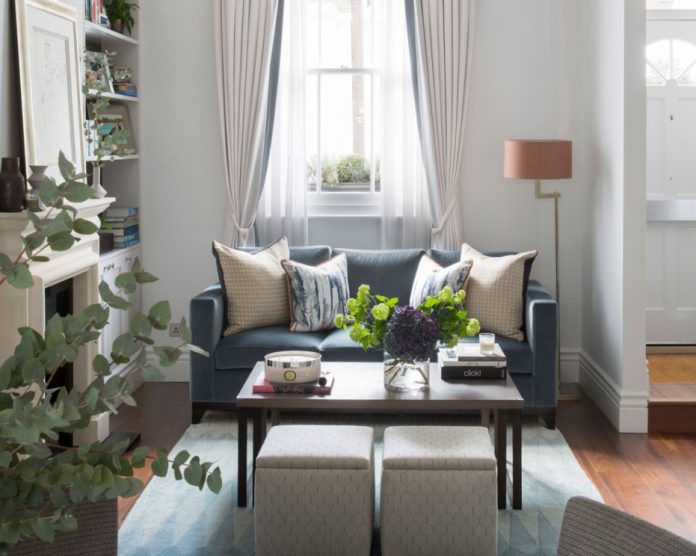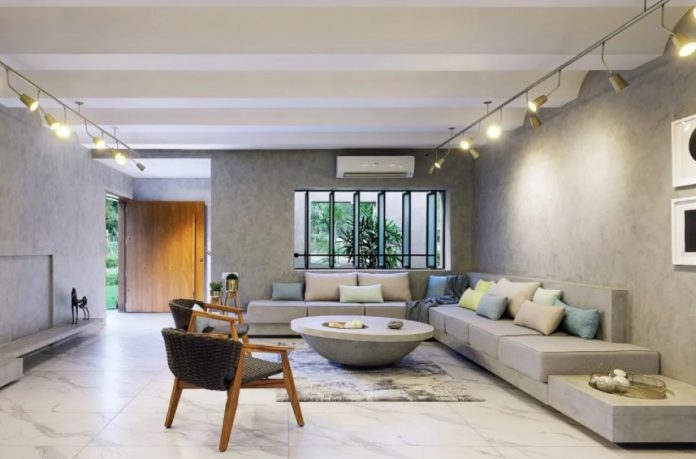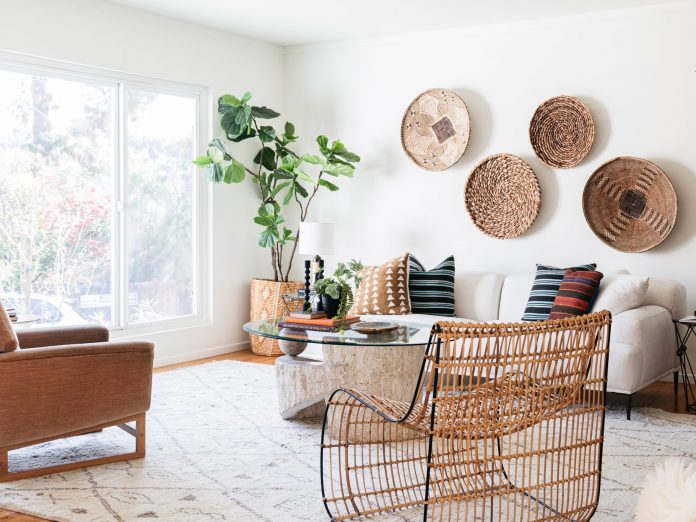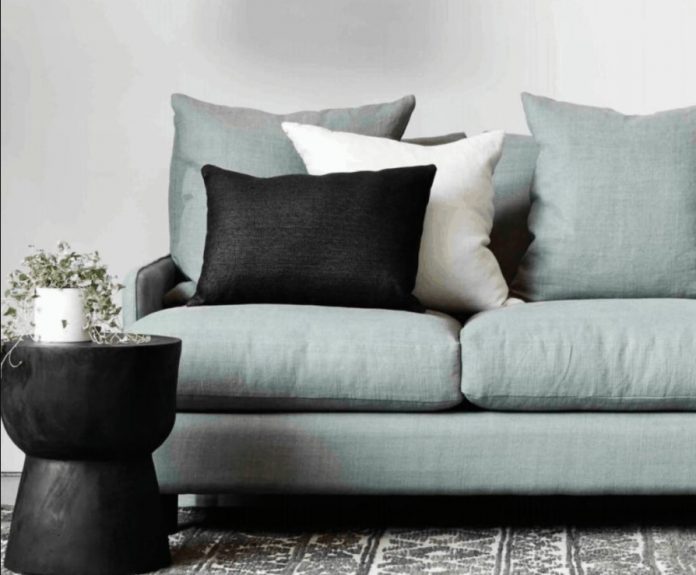Whether you call it a lounge, a sitting room, or a living room, the names sum up what this multifunctional space has to offer. It’s where life happens – socialising, entertaining, relaxing.
Here are 11 tips to make the most of your daily living space.
1. Identify your aesthetic

In simpler language, what do you like? Is 1930s chic your thing? Or do you prefer a traditional country cottage vibe? Think about how you want your lounge to make you feel.
Whether it’s relaxed, excited, or curious, decide on a style you know you love, and which gives you that feeling. You might have to compromise if you live with other people, so make sure everyone is involved in discussions about your décor.
2. Set the tone with wall hangings
What you put on the walls is a rapid way to transform the look and feel of your living room. Hang art on the wall by artists you love, and which fit within your budget. Choose wallpaper carefully, as the flat expanse of wall will steer the style of the entire room. Practicalities such as durability in the case of crayon-toting toddlers should be borne in mind, as well as textures and style.
3. Generate height and depth

The addition of height and depth – particularly in large rooms – can add additional layers of focus and interest. Creating a plate gallery, for example, can bring a 3D feeling to an otherwise flat wall.
If you’re intimidated by the prospect of drilling holes into the wall or you’re concerned about how your precious porcelain will fair with an onslaught of careening teenagers, secure plate hangers like these from PictureHangingSystems.com will put your mind at rest. A practical tip for adding height in spaces occupied by low furniture, such as a coffee table, is to display freshly cut flowers or plants to fill the vertical space.
4. Decide on furnishings
When considering what furniture needs to go into your lounge, think about what you use the room for. Watching TV, gaming, reading, and entertaining family and friends are likely to be among your most common goings-on, so make sure you’ve got the right furniture for the right activity.
On a daily basis, you’ll need somewhere comfortable to sit (a large sofa and a couple of armchairs) and somewhere to rest a drink and the novel you’re reading (a side or coffee table). If the kids have a friend over to play with, it might be handy to pull out a beanbag or a pouffe. For entertaining a few friends, folding chairs and nesting tables might come in handy.
5. Arrange furniture wisely

Making the most of your space can be quite an art. In living rooms where space is limited, pushing furniture against the wall makes sense in optimising the central floor space. Leaving at least 50cm between items of furniture allows people to pass through with ease. You can also create a sense of unity for mismatched items of furniture by placing their front legs on a rug.
6. Determine the focal point
There was a time when the fireside hearth was the focal point of any sitting room. Nowadays – you guessed it – the focus tends to be the TV. While seating needs to be arranged in such a manner that allows viewing without squinting, arranging the furniture in a semi-circle around the goggle box isn’t the way to create an effective living space.
See if you can make a focal point out of a period fireplace, a stunning coffee table or an elaborate mirror. If it’s possible, hide your TV in an attractive cabinet.
7. A place for everything and everything in its place

The living room is likely to be used on a daily basis for all sorts and by all sorts, so it can be a challenge to keep it tidy. Finding creative storage solutions can be a big help. Keep remote controls tidy but to hand by storing them in coffee table drawers and use footstools or pouffes with secret storage compartments. Store books and ornaments on open shelving, but tidy away less attractive-looking gear (laptops, cables, paperwork and so on) in closed cabinets or drawers.
8. Select the colour scheme
The colours you use should be deliberately chosen or you’ll end up with a hotchpotch of confusing colour palettes. Rugs, throws, cushions and curtains can add carefully considered accented colours to your lounge.
Don’t be afraid to balance bright colours with solid neutrals for a vibrant, but easy-to-live-in space. Search magazines for current colour trends, although greys and neutrals will always be en vogue.
9. Switch to lighting for all occasions

Different activities need different lighting, so don’t think you can get away with a single light source. General foot traffic passing in and out will need a bright ceiling pendant, while wall lights and table lamps will provide a softer glow and an atmosphere in which to unwind. An adjustable reading lamp should be well-positioned for the reader and so as not to dazzle others. A chandelier might be appropriate for more formal settings.
10. Decorate creatively
It’s important to imbue your living room with character, especially if you can represent your travels or hobbies. Big books, magazines or candles on a central coffee table never fail to create points of interest.
Make sure that the space remains liveable in practical terms and those decorations don’t become clutter. If you think this might happen, you can place them on a tray or an ornamental plate so they can be moved out of the way when you have more people over.
11. Embrace nature

Inviting nature into your lounge in the form of living plants can be beneficial on so many levels. Not only does the right fauna look lovely, but it can also enhance the room’s style and has proven health benefits. Your living room is where life happens. Slow down, have conversations and find joy in the surroundings of a lounge space that is special and unique to you and yours.









